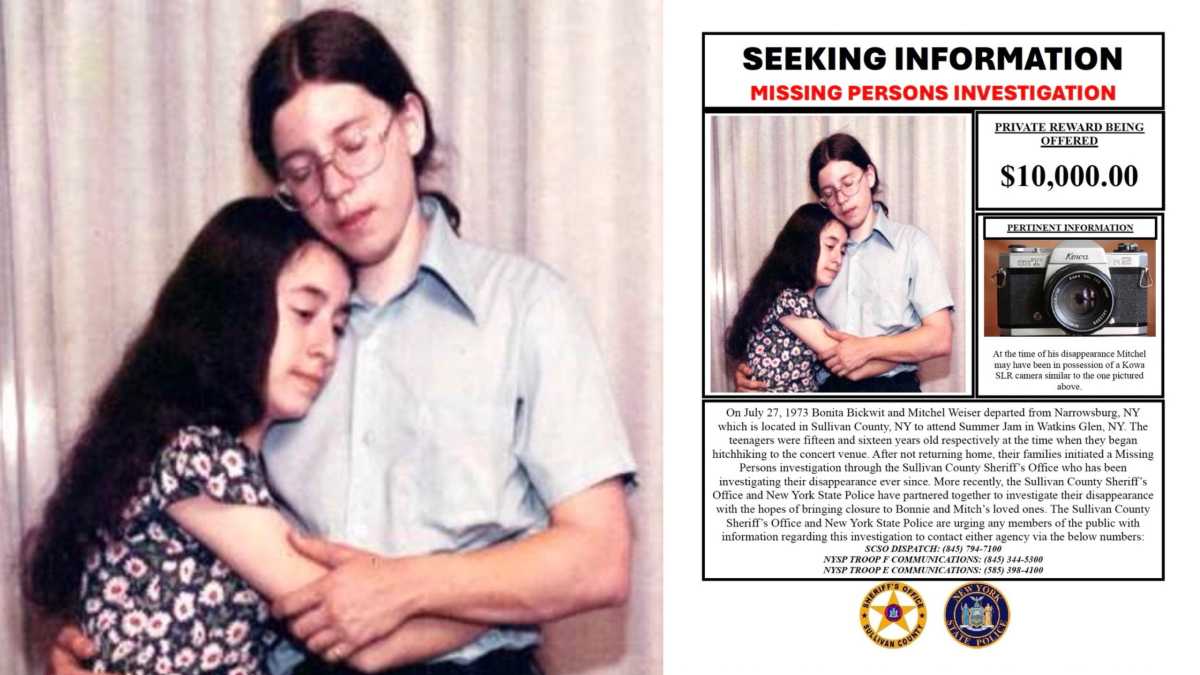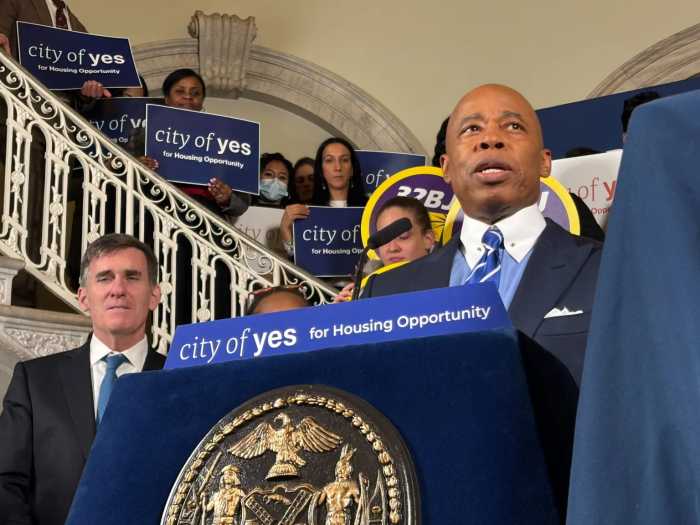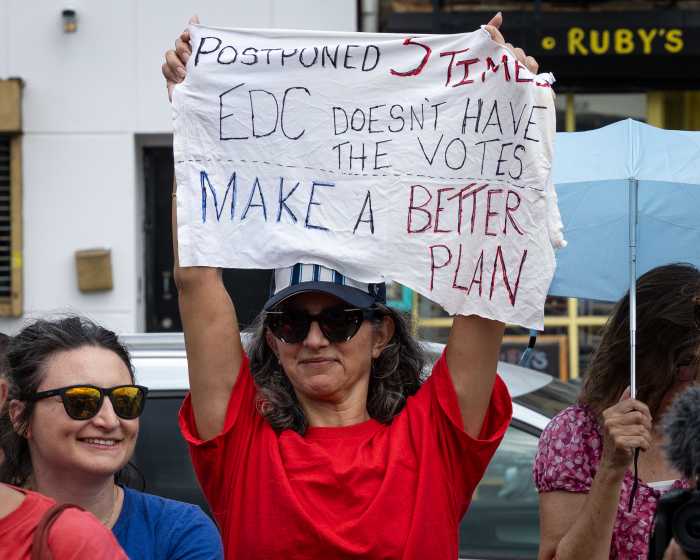BY CHRIS OLIVER
Construction work at William and Beaver Sts., being developed by the Manocherian Organization
There’s more evidence residential development is returning to Lower Manhattan nearly four years after the terror attacks on the World Trade Center.
But at least one group is concerned that new incentives to develop the area is a ploy to introduce luxury residences that will eventually squeeze out middle-income residents.
Excavation and construction is planned for “The William” at 15 William St., just a few blocks from the attack site.
Funding for the project is primarily financed through $131.4 million in Liberty Bonds, created by
Washington after the 9/11 attacks for development in the “Liberty Zone” south of Canal St.
The city-controlled portion of the funds are funneled to the developer by the Housing Development Corp.
A small portion of the apartments have been set aside for moderate income residents at $1,429 for studios and up to $1,837 for two bedrooms – all under consideration as plans are finalized
The city and state share $8 billion of the tax-exempt bonds for commercial and residential development.
H.D.C. president Emily Youssouf said in a statement that 15 percent of the The William units have been ear-marked for “potential residents who are in the moderate income range.
“We worked hard to find a solution to create affordable housing as part of the Liberty Bond program,” she said. “Now, with The William we will not only receive the three percent fee to construct affordable housing elsewhere, but 15 percent of the apartments will be set aside for affordable housing.”
A pedestrian near the construction site.
She said eligible applicants for these apartments can earn up to $81,640 per four-member family. The agency said monthly open-market rates for similar units in Lower Manhattan average around $2,100 for a studio and up to $4,550 for a two bedroom – about the same range for the remaining 85 per cent of spaces at the 15 William St. project.
She credited developer, The Manocherian Organization, for bringing affordable housing to Lower Manhattan.
Tracy Paurowski, an H.D.C. spokesperson said the layout, number of apartments and their breakdown sizes are not completed, so the number of floors could change as well as the number of studios, one and two bedroom units and even three bedroom units.
“The new residential developments created are bringing scores of people back to the area,” she added. “We are particularly pleased about 15 William. After a long negotiation process with several different projects looking for Liberty Bond financing, the Manocherian Organization emerged with this development that would deliver the most for downtown,” she said.
Originally, planners had hoped for a 2005 completion, but construction began only recently.
But this project and the issue of what constitutes affordable housing in the Liberty Zone does come with its detractors.
Bettina Damiani, a director for a group called Good Jobs New York says The William development will help little to create affordable housing in the area.
“Ironically, Liberty Bonds have created housing units in Lower Manhattan that the majority of New Yorkers – including teachers, cops and firefighters – can’t afford,” she said.
“Even the small [number] set aside for moderate units at 15 William St. by the H.D.C. won’t put a dent in the affordable housing crisis or the undue pressure long-time residents are experiencing,” she said.
The nationwide group works with public economic development officials and the media on the best practices to secure state and local job subsidies. They also seek to ensure that subsidized businesses are held accountable for family-wage jobs.
Developer Jed Manocherian of The Manocherian Organization said in a statement that, “We are particularly pleased to be able to fulfill the city’s and H.D.C.’s desire to provide affordable housing in the heart of the Liberty Zone.”
A spokesperson for the firm said the group had no further comment.
The Downtown Alliance, which manages the Lower Manhattan Business Improvement District, says despite the terror attacks there has been no real exodus from the area because of 9/11.
In 2000, the population of the area south of City Hall, river to river, was 24,665 persons living in 14,014 residential units. Following the collapse of the Twin Towers, the figures rose steadily to last year’s population of 33,106 residents living in 18,810 dwellings.
And it’s estimated that by 2008 there will be nearly 30,000 residents living in 52,300 apartments. The figures were also supported by the U.S. Census Bureau.
In another survey taken by the Alliance last year, figures show the average mean household income for the Downtown area since the attacks was listed at $150,200 – as opposed to $154,300 before the towers came down.
Calling Lower Manhattan “the nation’s most historic neighborhood,” a spokesperson said the Downtown Alliance is dedicated to promoting safe and clean living conditions in the neighborhood by supplementing city police and sanitation efforts. It also offers tourism programs, special events and street design proposals.
WWW Downtown Express

























